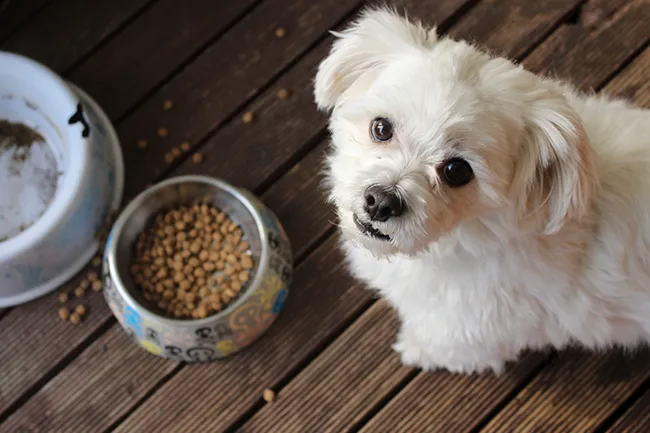Transitioning your pet to a new food is not as simple as emptying their old food bowls and replacing their usual menu. While some pets can tolerate sudden changes in their diet without encountering problems, for most pets, an abrupt dietary change may cause them to suffer adverse reactions such as stomach aches, vomiting, diarrhea, or nausea.
Want to know how to transition your pet to a new food properly? Read on as we share some valuable tips on how pet parents can ensure smooth and fuss-free pet food transition. But first, let’s look into some common scenarios where food transition might be necessary.
4 Reasons Why You Need To Transition Your Pet to a New Food
1. Your Pet Is Maturing
Your pets’ nutritional requirements change as they age. For instance, a puppy would need to be shifted to adult formula at six to twelve months old or upon reaching adult height.
The right time to make the shift to the adult formula would depend on your pet’s breed, size, and sex. Some pets tend to mature more quickly than others, but as a general rule, you can start introducing new, age-appropriate formula after your pet turns one.
Be ready for another diet shift when your pet reaches seniority. As older pets use less energy, they would also require a diet with fewer calories.
2. Your Pet’s Current Food Triggers Allergic Reactions
Some pet foods, such as those containing artificial flavors and chemical preservatives, trigger allergic reactions in animals. Pet food allergies can manifest in different forms, including frequent sneezing, runny nose, itchy skin, watery eyes, coughing, and even body pain.
If food-induced allergic reactions arise, immediately consult a veterinary allergist or dermatologist. A special vet-approved diet might be necessary to alleviate adverse reactions.
3. You Need To Manage Your Pet’s Weight
Probably most pet owners are guilty of overfeeding their babies at one point. While there’s nothing inherently wrong with overfilling your pet’s food bowls from time to time, be wary, as some pets are especially prone to weight gain.
Overweight pets are potential victims of a number of health complications, so if your pet is gaining too many extra pounds and you suspect their food is the culprit, switch them to a weight management formula.
In the opposite case, if your pet seems thin or underweight, consider talking to your vet to get them started on a unique weight-gain diet plan.
4. Your Vet Recommends a Specialized Diet
Your veterinarian might recommend a specialized diet based on your pet’s unique health needs. A special vet-approved diet might be essential to address food allergies, gastrointestinal problems, skin and oral health, or weight issues.
Some pets diagnosed with a health condition would also require a specific diet while on treatment to ensure their nutritional needs are in order.

How to Smoothly Transition to a New Pet Food
Transitioning your pet to new food must be done slowly and meticulously to avoid unwanted reactions. A good rule of thumb when switching to new pet food is to do it gradually over 7-10 days. You can start by mixing the new food with the old one each day and increasing the amount of new food until your pet is fully transitioned.
Here’s an excellent food transition approach to follow:
- First to third day: Start with 75% old food mixed with 25% new food
- Fourth to sixth day: Mix 50% old food with 50% new food
- Seventh to ninth day: Mix 75% new food with 25% old food
- Tenth day onwards: 100% new food
Closely observe how your pet reacts to the diet change. Keep in mind that some pets do not quickly get accustomed to new food. If, at any time during the transition, negative reactions arise or your pet starts refusing to eat the new food, either slow down the transition further or consult your veterinarian.
Takeaway
When choosing the right food for your animal companion, your primary consideration should always be their health and nutritional needs.
Transitioning your pet to a new food requires a decent amount of thought and proper consultation. Consider only high-quality foods that are organic, less processed, devoid of fillers, preservatives, artificial flavors, or other unnecessary additives.
Once you’ve learned the ropes, you’ll be ready to take charge of your pet’s nutrition and daily meals!


Leave A Comment